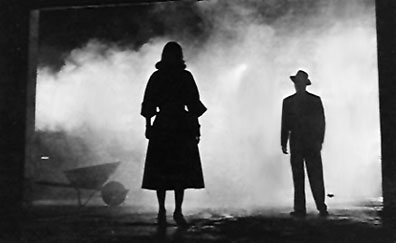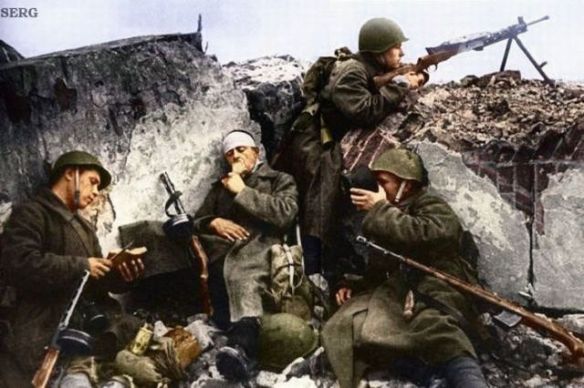During the post-war years, most of the countries that had been involved in the war had shifted their focus from filmmaking to more immediate ways of recuperating losses, like reconstructing cities and taking care of their citizens. Luckily for us however, Hollywood was able to greatly increase the morale of citizens and soldiers alike as well as helping support the general war effort. Many actors, politicians, and public figures put their luxurious careers on hold to fight in the war, some of the most notable being Sir Alec Guinness (Obi Wan Kenobi), Yogi Berra, Johnny Carson, and Clark Gable. While many members from all different levels of production are going to and coming back from war, Hollywood cashed in on the opportunity to make pro-war service comedies and Ally propaganda films, as well as some more harshly realistic films about soldiers and their families like The Best Years of our Lives.
One of the most influential aspects of Hollywood during this time was the Film Noir movement. Film Noir was not a specific genre that we had a formula for, but it was rather a tone, or an attitude that the director and actors placed within the film. These types of movies were usually about gritty, realistic stories that lacked a happy ending or any unnecessary fluff. They focused on street crimes and their aftermath throughout the community. Film Noir did an exceptional job putting all of societies inner post war fears into the films. It can be expected that when meeting characters in a Film Noir setting, that they all have some visible levels of doubt, uncertainty, or fear of failure. The film we watched this week, Casablanca, was a perfect example of a post-war noir, where nightclub owner Rick Blaine takes it upon himself to protect an old love interest and her new man from Nazi’s searching Morocco so that they can safely travel to the United States. The film explains how Casablanca is a doorway for refugees fleeing Europe and how important it is to get a boat once you are there.

The Big Combo – 1955
The documentary we watched in class, World War II In Color, provided the audience with original footage taken from the front lines; but when presented in color, the truly despicable nature of war becomes so bold that it is almost difficult to bear. The footage that was originally only viewed in black and white was all of the sudden much more shocking when it was in color. Adding color to the film made it seem like it was a much more recent event, and therefore made it seem more realistic to a younger audience.

The same type of phenomenon happened to be true later in the film when a group of Germans visited a holocaust internment camp. These Germans had lived in the same town as this death camp for years, but they had obviously never visited. It only took one time of actually seeing and smelling the bodies for all of them to second guess the type of atrocities that took place there. This scene was also sadly able to prove that suffering does not end when war does.

While the documentary of World War II was being played, I couldn’t bare to look, even though it was being played in color. With all those dead bodies and violence going on, my eyes could not handle it. I always wondered how these things, such as the war, got caught on camera and was able to be watched years later when talking about history. Also, how did they change a black and white film into color? Whoever said, suffering was done when war is over? A scene from this film shows that that is not true and that is very tragic.
LikeLike